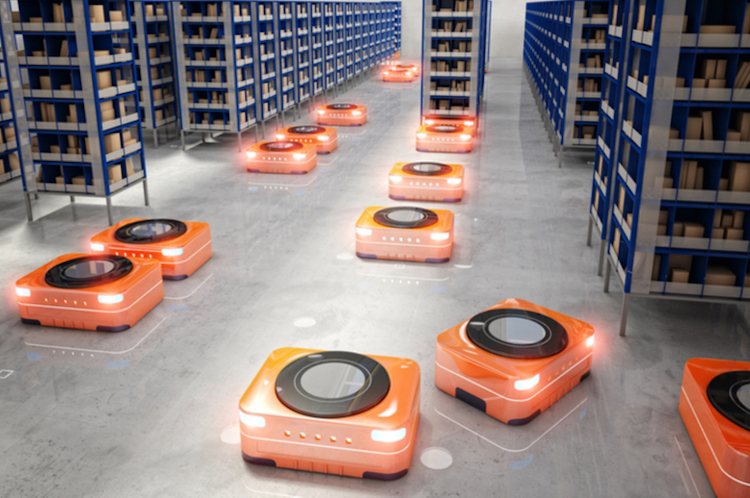
How robotics can be extremely beneficial to warehouse business
By Koyel Ghosh
There is no doubt that warehouse robotics can increase the efficiency of human workers in more than one way.
Especially when it comes to moving heavy products and transporting them to far-fetched locations, there would perhaps be no better alternative than warehouse automotive solutions.
In today’s fast-moving e-commerce scenario, supply chain officials often tend to come across several logistics challenges.
Particularly, meeting all-inclusive demands of consumers requires utmost dedication from the operator’s end.
Propelled by growing e-commerce gimmicks, teeny-weeny product life cycles and the constant impact of the Amazon effect, distribution centers have ended up finding it highly difficult to manage large volumes of single-piece orders through standard picking approaches.
Moreover, accelerated delivery times always need efficiencies in the supply chain. And, that’s how operational executives have now started looking for autonomous solutions for order delivery.
This post is going to show you how mobile robot technologies will help your warehouse business reap a plethora of benefits down the line.
First and foremost, dull, boring and repetitive tasks take significant amount of time from resources that could be better utilized on projects that require critical thinking, which only human employees are best at.
At the same time, robots are exclusively designed to manage routine functions while sustaining long-term accuracy as well as precision.
Warehouses can enhance productivity without hampering the essential quality with robotic workers in place. Perking up supply chain productivity can dole out substantial value to warehouse robots.
They can top up accuracy, speed up routine processes, and crack a number of common problems with staffs when used simultaneously.
Secondly, the use of automaton in the warehouse makes sure there is hardly any chance for errors in relation to human labor.
Additionally, this system diminishes the time taken to move around different parts of the warehouse. This way, it becomes easier for human employees to focus more on quality control.
It’s pretty needless to mention that robots don’t need to be with people round the clock.
They can easily work with programmed sensors and it checks the possibilities of untoward events or serious mishaps that could bowl over an employee’s safety.
Some of the most common impairments or damages to warehouse staffs is instigated by caved in pallet racks, or high ladders.
Warehouse robotics wipe out these common hazards for staffs, thereby paving the way for a safe and secure working environment.
With robotics on board, scheduling becomes easier as well.
Human employees, quite naturally, tend to take breaks for rest and energy rehabilitation, while robots, on the other hand, don’t need it at all.
They can easily work all over a long shift without complaining even for a second.
This way, the implementation can also be faster and quicker. Just within few weeks, robots can be credibly implemented, depending on the details and essentials of the operation.
Especially, when compared to other prevalent technologies, the time taken by robots to complete a task is truly insignificant. And, human resources might take even a year to complete certain implementation.
Last but not the least; as robots are comparatively easy to fit in a facility, one can use a sectional disposition system with business expansion.
This creates a chance for the operational heads to evade high primary investments, as they can just initiate with one or two and extend the floor over time rather than purchasing a number of robots at a time.
This flexible deployment frees the management from the capital to trail through other initiatives, evaluating robots’ impact on their business, and taking hold of other required steps.
Now when the dispute rages over whether the loss of industrial jobs is instigated by automation only, the reforming and transfiguring power of robotics in the supply chain has become truly irrefutable.
A recent report by The Wall Street Journal has it to state that the grocers are trying out micro-fulfillment systems that can deliver more than three thousand orders a week.
The reality is that robots go in for a smaller warehouse footprint than human staffs, and can work untiringly for longer period of time. Also, they don’t need any sort of remedial or therapeutic coverage.
It not only ensures abridged costs and better efficiency, but also guarantees the capability to do things that simply could not otherwise be possible by human supervisions.
Also, in the last few years, there has been a growing evidence that warehouse staffs gladly welcome robotic aids.
As amenities and conveniences grow larger, lifting heavy items and performing physically demanding jobs are no more a herculean task.
Now, Amazon has more than 200,000 robotic vehicles at their disposal. Called “drives”, the robots are being utilized for successfully moving goods through its fulfillment squads around the US.
According to Allied Market Research, the global warehouse robotics market is expected to grow at a significant annual growth from 2017–2023.
Rising number of stock keeping units is one of the major factors fueling the growth of the market.
On the other hand, high elementary cost related to training and implementation, dearth of adequate knowledge, and certain issues in corresponding to robots for some end users are expected to restrain the growth to some extent.
However, wide adoption of warehouse robotics by an end number of industries, and increasing labor costs have almost broken off the above possibility and paved the way for an array of opportunities in the industry.
Briefly, warehouse robotics can be defined as easy deployment of mechanism in the warehouse to dole out operations such as packing, wrapping, conveyance, palletizing, and so on.
The amalgamation of warehouse and robotics science has ascertained the fact that there is precision and automation while mounting up the warehouse storage space as well as operational proficiency.
Simultaneously, surge in demand for automation due to widespread competition in e-commerce, and exclusive advancements in technology have escalated the market growth in more than one way.
To sum up, it can be stated that the warehouse robotics market is growing at a steady pace, and in the next few years to come, it’s going to expand yet more.

About the author: Koyel Ghosh is a blogger who writes on a variety of subjects relating to the industrial sector.
